Imagine that you’re doing everything you can to eat healthy, including filling your diet with a variety of plant foods. But unknown to you, there are microscopic compounds hiding on what you eat, sabotaging your health on a daily basis.
This is a picture of the impact pesticides in foods can have on you and highlights one very real problem they pose.
Due to mounting evidence of their detrimental effects on human health and the environment, pesticide use has become very controversial. Yet the U.S. alone continues to use around 1.2 billion pounds of pesticides each year.
Even more alarming, over a quarter of all agricultural pesticide use in the U.S. involves pesticides banned in the EU and other countries over toxicity concerns.
There are many voices of concern focused on the dangerous long-term effects of consuming pesticide residue on food. (And rightfully so.)
However, there are several other ways pesticides negatively impact humans and the environment that should also be talked about because most directly relate to our food system.
Here’s a closer look at the big picture of pesticide use and the potential dangers it poses.
What Are Pesticides + Why Use Them?
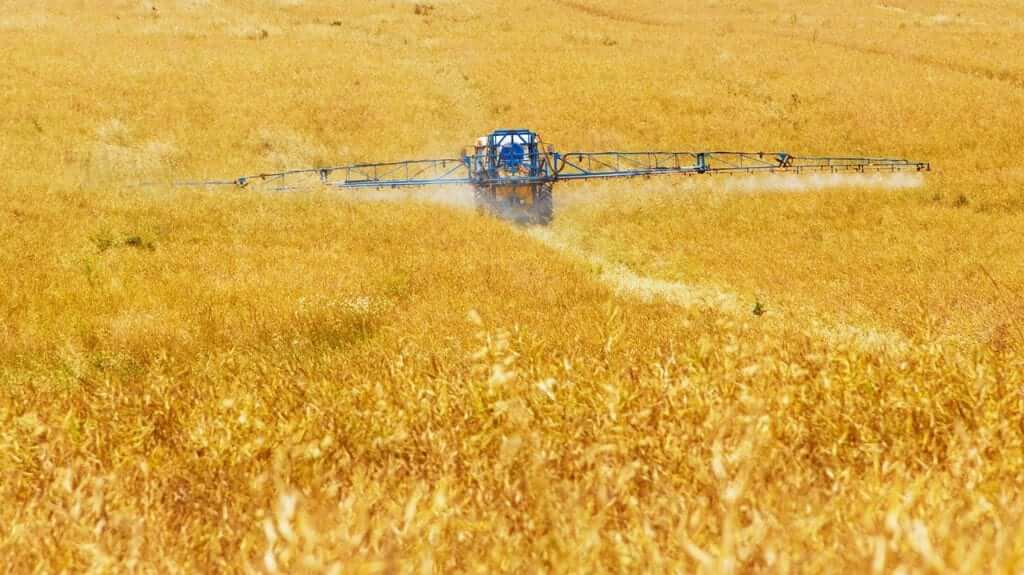
There are several categories of pesticides but all are designed to kill unwanted pests or halt pathogens. Insecticides kill insects, herbicides kill weeds, fungicides fight pathogenic fungi, and so on.
There are many different applications for pesticides. For example, rodenticides can be used around a home to keep rodents out. DDT (an insecticide) was used in the 1940s to kill mosquitos that were spreading malaria.
However, one of the top uses for pesticides (and the focus of this article) is for agriculture.
Many farmers, especially those farming on a large scale, have come to depend on pesticides. They save on labor and typically allow farmers to get a much larger yield. Most pesticides have been developed to specifically fight the insects or diseases that could take out a whole crop, which helps avoid crop failure.
Large scale farmers tend to use the greatest amount of pesticides. Labor costs make mechanical weeding or integrated pest management difficult because the area to care for is hundreds of thousands of acres.
As a result, conventional farming methods often involve blanketing fields in chemicals. This includes methods like spraying wheat crops with an herbicide at the end of the season to speed the drying process as well as treating crops throughout the growing season.
The Hidden Dangers of Pesticides in Foods
With this massive reliance on chemicals, it’s no wonder there are serious concerns about pesticides in foods.
Larger crop yields and better, less expensive food production may be good things. But there’s mounting evidence that there is a significant hidden cost that comes with them.
Many Pesticides Can Be Acutely Toxic to Workers
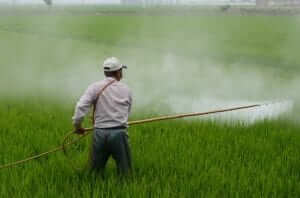
Exposure to pesticides through residue is a serious issue (as we’ll get into later), but the dangers of acute exposure often get overlooked.
Most containers of common pesticides have the skull and crossbones symbol on them, indicating how toxic they are. There are safety precautions that are supposed to be followed when applying them. This includes things like wearing protective equipment, not spraying on windy days, etc.
However, this doesn’t mean the precautions are actually followed.
Many farmworkers come from immigrant families. While some have excellent English skills, others don’t. They may not be able to read or understand warning signs and can be pressured to accept unsafe working conditions.
For example, a farmer may be short on time and have workers spray on a day with high winds, even though this is unsafe. Or workers may be sent to work in a field that was just sprayed, despite the fact that the pesticides have not been absorbed yet.
Drift is another issue. It involves pesticides becoming airborne and traveling to an unintended site. This could mean a neighboring field, or it could mean someone’s home, a school, etc.
Another acutely toxic situation is the manufacturing of pesticides. Some studies on workers in India found many cases of neurological, gastrointestinal, cardiorespiratory, and reproductive symptoms during the manufacturing process.
It’s clear that the problem of using these chemicals goes far beyond the fields where they are sprayed.
Detrimental to the Environment
The presence of pesticides in certain foods is a real problem for clean eating. But equally important is the impact these chemicals have on the earth, which is where our food comes from.
Perhaps the first warning bell of the toll of pesticides on the environment was the book Silent Spring by Rachel Carson. It led to the eventual ban of DDT in many countries and made many take a closer look at what pesticides were doing to the environment.
One of the biggest problems is water contamination.
Pesticides sprayed on plants can easily leach into groundwater and run off into waterways. In fact, a 2014 study that conducted tests in 38 states in the U.S. found that glyphosate (the active ingredient in Roundup) was present in the majority of streams and rivers along with 70% of rainfall.
Theoretically, the amount of pesticides in our waterways is within a “safe” level. Yet, there is little research on the long-term effects of chronic pesticide exposure in wildlife (or to humans through drinking or irrigation water).
In fact, research on streams in Germany, Australia, and France found that the biodiversity of insects, amphibians, and birds decreased with pesticide presence, even where pesticide concentrations were deemed to be within a “safe” range.
Involved in Pollinator Loss & Soil Decline
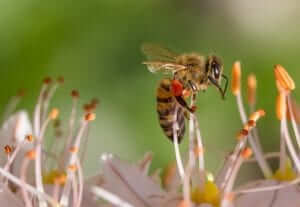
There’s also the huge problem of pollinator decline and the death of beneficial insects.
Insecticides don’t differentiate between beneficial and “pest” insects. This means that non-targeted insects can and do get killed from pesticide use. Ironically, the decline of bees has highlighted just how vital they are to our food system as pollinators.
Another detrimental (and frequently overlooked) aspect of pesticides is their effect on microbes in the soil.
The soil is full of bacteria, nematodes, fungi, and numerous other microbes. Though a few can be considered pathogenic, many are beneficial and essential for healthy soil and healthy plants.
A top argument in favor of pesticides is that they breakdown before the plants are harvested and eaten. This, it is argued, is why pesticides in foods are not a big problem.
But this raises an important question: Where are they broken down?
The answer most often is the soil. Some pesticide residue does get washed away (as discussed), but much of ends up in the soil to either be broken down or to accumulate.
Research indicates that this can change both the microbial activity and microorganism counts in the soil, altering it in unpredictable ways. The effects of this are still to be seen, but it’s rarely good to disrupt a natural ecosystem, especially one in which much of our food is grown.
Overuse Leads to Pesticide Resistance
Yet another negative aspect of frequent pesticide use is something called pesticide resistance.
This refers to the development of “superweeds” as well as insects and pathogens that are resistant to pesticides. It happens because of the continual use of the same pesticides on the same plants (or insects, etc.) on a large scale.
Pesticide resistance is nothing new.
As an example, many countries banned DDT due to its negative environmental impact. However, before the book Silent Spring even came out, mosquitos in Sri Lanka had become largely resistant to DDT, leading to a resurgence of malaria.
What does pesticide resistance mean for the environment and human health?
Instead of tackling the root of the issue (continual pesticide overuse), it typically means the formulation of new pesticides, which often involves the combination of older, more hazardous chemicals. (One such new combination is glyphosate (a potential carcinogen) and 2,4-D (potential carcinogen and endocrine disruptor).)
Another more hidden danger is the fact that overuse of pesticides in agricultural applications can spread into other areas.
A prime example of this is the evidence indicating that insecticide use on farms has contributed to the insecticide resistance of malaria-carrying mosquitoes.
Exposure & Residue May Cause Serious Health Problems

The presence of pesticides in the foods we eat everyday may be the most widespread danger of using them.
Despite the insistence of the FDA and EPA that pesticide residue on produce largely remains within “safe” limits, numerous studies have shown that many of these chemicals are linked to cancer, endocrine disruption, reproductive issues, and developmental problems.
The amount of pesticide residue on a single piece of produce may be small, but how often do you eat?
For most of us, the answer is everyday, which means we are continually accumulating small amounts of pesticides. It’s not hard to see that this has the potential to cause serious health problems down the road.
The Environmental Working Group (EWG) puts together one of the most comprehensive reports of pesticide residue on produce every year. Their latest 2021 report found that about 70% of non-organic food contained residue of at least one pesticide (and often several).
This means you are being exposed to pesticides regularly by eating conventionally-grown produce, especially if you eat a plant-based diet.
Even more concerning are studies indicating that children are most at risk for suffering health problems from pesticide exposure (including in the womb). This again calls into question whether “safe” levels of pesticide residue are truly safe- particularly for the most vulnerable.
Worst Pesticides in Foods (& For the Environment)
The list of pesticides with health-harming potential is too long to go into fully, but here’s a look at some of the most common and toxic ones still in use.
Atrazine

Atrazine is a popular pesticide in the U.S., even though it was banned in the EU in 2004. It’s one of the most common toxins in drinking water. Some estimates have found it in almost 90% of drinking water in the U.S.
Used as a weed killer, atrazine is an endocrine disruptor and especially problematic for women. It can cause menstrual irregularities, low estrogen, and possibly fertility issues. Atrazine also has the potential to harm a fetus during pregnancy and cause birth defects.
In the environment, exposure to atrazine can essentially cause male frogs to turn into female frogs. This is potentially devastating for their reproduction (as well as being extremely alarming).
Organophosphates
Organophosphates were developed from a formula the Nazis originally intended to use in chemical warfare. They attack the brain and nervous system of both insects and mammals, making them one of the most dangerous pesticides when found on foods.
This type of pesticide can cause convulsions, coma, and death with acute exposure. Chronic exposure may harm brain development and impact fertility.
Chlorpyrifos is a specific organophosphate that is proving to be especially toxic for children. Even exposure to low levels has been linked to learning disabilities, neurological problems, and developmental delays.
In spite of evidence from the EPA itself that “residues of chlorpyrifos on food crops exceed the safety standard,” that same organization has so far refused to ban this pesticide.
Glyphosate

The active ingredient in Roundup, glyphosate has come under fire because it has been linked to an increased risk of non-Hodgkin lymphoma. In fact, the World Health Organization has labeled it as “probably carcinogenic” to humans.
The EPA, however, has declared glyphosate unlikely to be a carcinogen. This was due in large part to unpublished research studies provided by Monsanto (the maker of Roundup), which are unlikely to be impartial.
Glyphosate is most likely to harm those who are spraying it. Food residue has an unknown impact.
2,4-D
2,4-D is a commonly used weed killer. It’s used for farming, landscaping, and forestry and is approved for home use. Listed as “possibly carcinogenic,” 2,4-D was once an ingredient in Agent Orange, the toxic defoliant used in the Vietnam War.
There are studies indicating that 2,4-D may also be an endocrine disruptor.
Recently, the EPA approved a new pesticide (Enlist Duo) that combines 2,4-D and glyphosate. Neither chemical appears to be going anywhere for a while.
Neonicotinoids (“Neonics”)
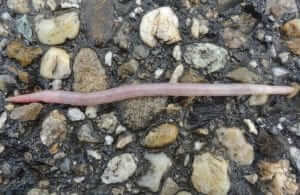
Neonicotinoids, or neonics for short, are suspected of playing a large role in the massive decline of bee colonies. They are used as an insecticide and appear to be detrimental to certain non-target insects.
Though much focus has been on neonics and bees, other research indicates that this type of pesticide accumulates in the soil and can also kill invertebrates like earthworms.
Paraquat
Paraquat is a weed killer that is linked to the development of Parkinson’s disease. It was thought to be most dangerous when inhaled, but research indicates that low-level exposure may also increase the risk of Parkinson’s.
It’s banned in China and the EU, but not the U.S.
12 Top Foods to Buy Organic
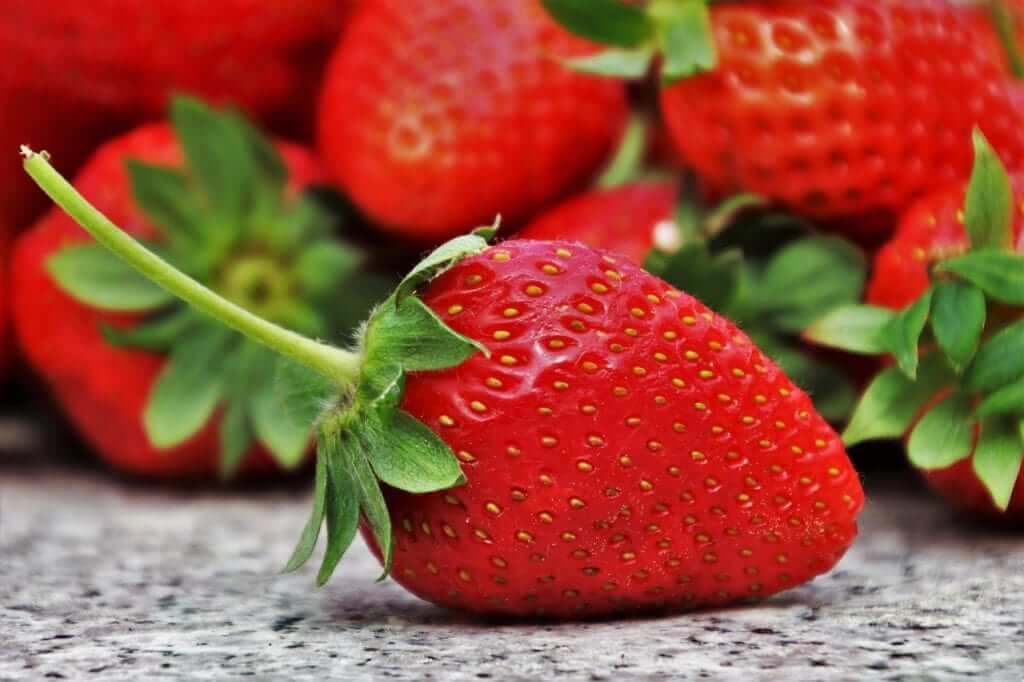
The dangers of pesticides in foods are very clear, but what is the solution?
As one breakthrough research review has documented, eating organic is likely your best protection right now.
Very few studies have focused on the long-term effects of eating organic vs. conventional food. However, this review conducted in 2019 found “significant positive outcomes” associated with greater organic intake. These positive outcomes included a reduced risk of things like infertility, allergies, birth defects, and certain diseases.
While eating only organic food would be ideal, the cost can be prohibitive.
That’s why the EWG publishes its report each year on which foods have the most pesticides. By at least buying these fruits and vegetables organic, you’ll be able to significantly cut down on pesticide residue in your diet.
“Dirty Dozen”
- Spinach
- Strawberries
- Kale, Collard Greens, & Mustard Greens
- Grapes
- Peaches
- Cherries
- Nectarines
- Pears
- Apples (frequently treated with diphenylamine, a chemical restricted in Europe)
- Blackberries
- Blueberries
- Potatoes
Of Concern
Citrus didn’t make the “Dirty Dozen” list, but the EWG has mentioned a concern over the presence of Imazalil, a fungicide and likely carcinogen, in many citrus fruits.
Almost 90% of citrus samples tested positive for Imazalil residue, including over 95% of tangerine samples. It was even detected on peeled oranges.
A Very Real Threat
When all aspects of pesticides are considered, it’s obvious that they pose a very real threat to human health and to the environment. Yet despite many documented negative effects, they continue to be widely used in agriculture and other applications.
This means it’s up to you (once again) to take charge of your own health.
Put simply, the best option is to buy organic as much as possible.
BE CAREFUL About What You Feed Your Body BOTH Ways
You now understand why it’s important to be conscientious of the foods you put into your mouth with pesticides in mind.
However, PLEASE DON’T FORGET that you also feed your body what you apply to your skin!
And even if cosmetics / personal care products use entirely natural ingredients in their formulations, if the products are not “USDA Certified Organic,” that means those ingredients may well have been farmed using pesticides and other potential toxins!
If you’re in the USA, look for the USDA Certified Organic designation on both foods you put into your mouth and products you use on your skin, as this ensures no toxic ingredients are used — AND it ensures the natural ingredients used were farmed without pesticides.
If you are in the market for a highly effective anti-aging cream or facial wash, for example, head to Purity Woods — which provides only USDA Certified Organic cosmetics, meaning no toxic ingredients AND even the ingredients used are raised without pesticides.
Find out more about Purity Woods here

The bottom line is, by “cleaning up” what you allow into your body, you’ll be putting less of a chemical load on your body, which has great health benefits. Not only that, you’ll also provide support to farmers who are taking the pesticide load off the land. It’s a win-win!

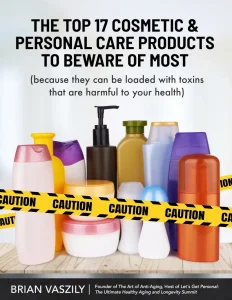
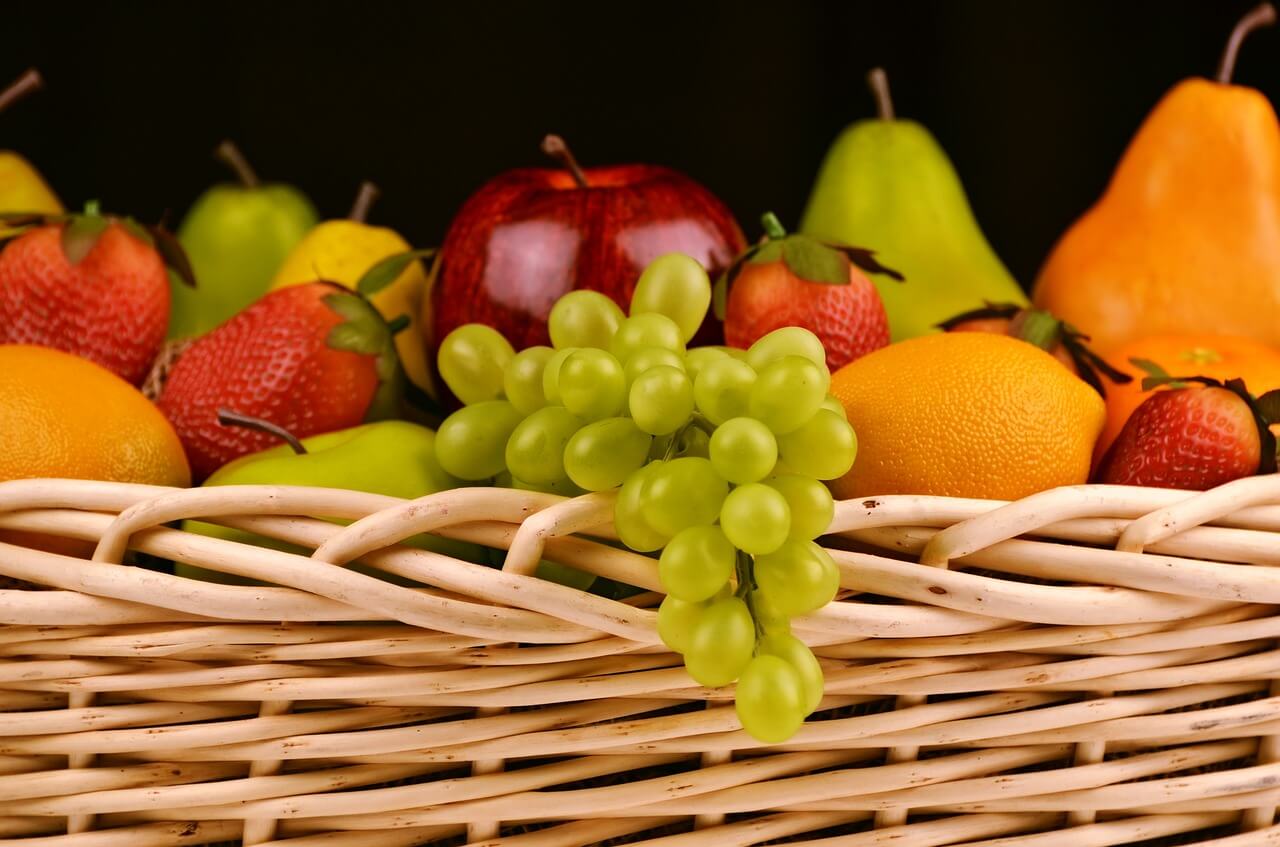
https://www.ncbi.nlm.nih.gov/pmc/articles/PMC3945755/
Glyphosate, pathways to modern diseases II: Celiac sprue and gluten intolerance
Abstract
Celiac disease, and, more generally, gluten intolerance, is a growing problem worldwide, but especially in North America and Europe, where an estimated 5% of the population now suffers from it. Symptoms include nausea, diarrhea, skin rashes, macrocytic anemia and depression. It is a multifactorial disease associated with numerous nutritional deficiencies as well as reproductive issues and increased risk to thyroid disease, kidney failure and cancer. Here, we propose that glyphosate, the active ingredient in the herbicide, Roundup®, is the most important causal factor in this epidemic. Fish exposed to glyphosate develop digestive problems that are reminiscent of celiac disease. Celiac disease is associated with imbalances in gut bacteria that can be fully explained by the known effects of glyphosate on gut bacteria. Characteristics of celiac disease point to impairment in many cytochrome P450 enzymes, which are involved with detoxifying environmental toxins, activating vitamin D3, catabolizing vitamin A, and maintaining bile acid production and sulfate supplies to the gut. Glyphosate is known to inhibit cytochrome P450 enzymes. Deficiencies in iron, cobalt, molybdenum, copper and other rare metals associated with celiac disease can be attributed to glyphosate’s strong ability to chelate these elements. Deficiencies in tryptophan, tyrosine, methionine and selenomethionine associated with celiac disease match glyphosate’s known depletion of these amino acids. Celiac disease patients have an increased risk to non-Hodgkin’s lymphoma, which has also been implicated in glyphosate exposure. Reproductive issues associated with celiac disease, such as infertility, miscarriages, and birth defects, can also be explained by glyphosate. Glyphosate residues in wheat and other crops are likely increasing recently due to the growing practice of crop desiccation just prior to the harvest. We argue that the practice of “ripening” sugar cane with glyphosate may explain the recent surge in kidney failure among agricultural workers in Central America. We conclude with a plea to governments to reconsider policies regarding the safety of glyphosate residues in foods.
Conclusion
Celiac disease is a complex and multifactorial condition associated with gluten intolerance and a higher risk to thyroid disease, cancer and kidney disease, and there is also an increased risk to infertility and birth defects in children born to celiac mothers. While the principal diagnostic is autoantibodies to tissue transglutaminase, celiac disease is associated with a spectrum of other pathologies such as deficiencies in iron, vitamin D3, molybdenum, selenium, and cobalamin, an overgrowth of pathogens in the gut at the expense of beneficial biota, impaired serotonin signaling, and increased synthesis of toxic metabolites like p-Cresol and indole-3-acetic acid. In this paper, we have systematically shown how all of these features of celiac disease can be explained by glyphosate’s known properties. These include (1) disrupting the shikimate pathway, (2) altering the balance between pathogens and beneficial biota in the gut, (3) chelating transition metals, as well as sulfur and selenium, and (4) inhibiting cytochrome P450 enzymes. We argue that a key system-wide pathology in celiac disease is impaired sulfate supply to the tissues, and that this is also a key component of glyphosate’s toxicity to humans.
The monitoring of glyphosate levels in food and in human urine and blood has been inadequate. The common practice of desiccation and/or ripening with glyphosate right before the harvest ensures that glyphosate residues are present in our food supply. It is plausible that the recent sharp increase of kidney failure in agricultural workers is tied to glyphosate exposure. We urge governments globally to reexamine their policy towards glyphosate and to introduce new legislation that would restrict its usage.
excellent info……personally, i am convinced that ppl don’t have “gluten intolerance”, they have glyphosate intolerance……on top of how messed up our gut is by eating GMOs
I completely agree!
I also agree.
I would like pamphlet made up so I could hand them out. My husband lives in a care home for ventilator patients. One day when I came to visit him I saw the next door neighbor spraying in his front yard. So I went and asked him if he was using ROUNDUP. To my horror he said yes! Then I asked him if he knew about Monsanto being sued for becoming ill after working with it. He said he never heard about it or anything at all. That was hard to believe but I told him and reminded him he has young children and a new dog plus him and his wife. Then said my husband lives next door and with all the others and extremely susceptible toxins. I asked him to go on the internet and see for himself and to please stop using it. Also I told him there are safe effective ways to get rid of weeds with safe, nontoxic products even ones you can make your self! I hope he has stopped!
Well done!
Hello, Michael.
Would you be able to tell me if the amount of glyphosate in our vegetable garden soil is safe to grow vegetables for human consumption? A year ago, by mistake, Prosecutor, made by Lesco, was mistakenly sprayed on the vegetable garden soil. We are having the current soil analyzed. We are looking for someone to interpret the findings we will shortly receive. We need to know if it’s safe to plant our vegetable garden this year. Thanks so much.
Florence Weinstein
We appreciate your continued work and attempting to keep people healthy. Healthy people are happy people and healthy people save money. It seems like you really delve into the issues to find out the facts. Facts are most necessary. Thank you for all you are doing.
This article has been most informative though I have tried to eat as much organic as the wallet allows and I do was my produce as best I can.
Very much needed and important matter which is so often overlooked and even ignored.
Despite people often being aware of the dangers posed by the 12 non-organic foods/fruits
your pointed out/mentioned. Due to organic choices/options being either too expensive or
only affordable every now and again is most likely the reason why it works out this way.
However, it’s good to be conscientious regarding all of this rather than being oblivious to it all
without due consideration to the long term health effects for one’s family also is foolish.
May it always be brought to people’s attention of this unseen danger.
I have and still am (though to a much lesser extent) a distributor for Forever living products (USA company) health products. Being producers of the Aloe vera plant and by law a farmer using pesticides/chemicals is not allowed to grow any of their crops next to the Aloe Vera plant. This is going back more than 30years and that goes to show how important and crucial such a matter is even more so today.
As the widow of a beautiful man, my husband, Dean, I fully endorse your work. I’ve made it my mission to inform people of the dangers of pesticides in our Eco System, particularly Monsanto@Bayer’s Roundup, which my husband use in our garden. He was an athlete, a 7th degree Black Belt in Kenpo Karate and a noted actor and Theatre Director in Hollywood. His life was cut short by Non Hodgkins Lymphoma cause by Glyphosate poising from using Roundup in our garden.
Deborah Brooks
The Dean Project
deborah@thepainterofbeauty.com
I was so sorry to read this. To lose one’s husband is devastating but to know it is due to man’s greed for profit is worse.
As you wrote this 3 years ago I hope you are able to remember happy times with him more than sad ones. Grief lasts for a lifetime sometimes you see,hear,smell something that is an immediate reminder.When that happens it is just as devastating as it always was, but somehow as time goes on ,the times it happens become less. I hope this is where you are now .I lost my soul mate after 49 yesrs 10 years ago & I know that he like Dean would just want us to be happy Brigid
Thankyou for this well-researched article. The more people know about pesticides and how they are used and abused in our food is enlightening. I have posted this on Facebook.
Thank you for this important information about pesticides. This is important especially if you are eating a whole food plant-based diet like my mother. One of the fruit which is her favorite is grapes. I will try to keep that in mind the next time we go shopping.
Thank you for this valuable information.I think every person should take the time and effort to
contact there state and federal politican, to make it mandatory the all produce be labelled with any of the hazardous additives used to grow them, then people would have the power and knowledge on what foods to buy
Please watch documentary KISS THE GROUND with your children and/or grandchildren. There is a way out of this! You decide what produce to spend your $$ on, you can save your loved ones and from there it just grows….
Please buy organic! If we all reject pesticide laden produce, we will be healthier and live longer. The only thing these killers know is a drop in profits. If we DEMAND clean produce, we will get it.
It is stated above that the effect of glyphosate residues are unknown. What I have practically found is that my eyes are affected if I eat glyphosate treated maize – many farmers use glyphosate to dry the maize in crop quicker in the field. Many times this maize is not given to humans directly, but indirectly through chicken feed, also causing my eye fluid to dry up when eating maize fed chicken. I discovered this effect only after I had my right eye operated on because of a retina detachment. So my conclusion is that glyphosate in the food, over and above being a possible carcinogenic, seems to dry out your eye fluid with detrimental effect on your eyesight, inter alia causing floaters and may be even the cause of the detachment
As a ‘Master Gardener’ and researcher online and from other ‘reputable sources’, I have found profound evidence that Big Business does NOT care about their customers; only that which fills their pockets. The same companies who deliberately disregard the findings of science and the practices of many World Governments to BAN the many toxic chemicals used today, here, in the United States, are BRIBING your POLITICIANS with money and gifts to be able to continue with the use of these TOXIC chemicals; with NO regard to human life. As has bee3n mentioned Monsanto / Bayer (and the many others) have KNOWN for decades exactly what their chemicals are doing to humans, animals, insects and aquatic life.
As has been mentioned in another post; these companies know only one thing; their wallets. IF you want to provide for a better future for your children and grandchildren you NEED to stop buying those products which are NOT organic. (I know the following would be considered ‘political’; however,..) Another approach to this is to vote out all incumbents in every election, at every level of government. In this fashion big business would be required to buy another person after every election. This would also ‘hurt’ their wallet’. I have witnessed politicians who start with a ‘good heart’ and the proper attitude, only to be swept up in the clamor of political monies.
GMO’d produce is most always corn and wheat and is only consumed when purchased as ‘manufactured’ foods on your grocery store shelves. Think breakfast cereals; most ALL made from corn or wheat. You may well find GMO crops in breads, too – most everything wheat or corn. Another reason to have your politicians vote FOR GMO labeling.
As I mentioned I love to garden. Something I would encourage ALL people to do more. Even if it is in ‘containers’ on a porch or in a window. The first time you taste your own tomatoes, carrots, beans and so on, you will never want to buy another anemic tomato from a grocer. You will also know what you have grown your own produce with. I have been growing edibles chemical free for over thirty years, and it is easier than you may first think. As a major company once stated: “just do it”.
Thank you for sharing this excellent information and making us aware of all the pesticides that are being used. We do have a choice and I can only say that growers of food products have a choice as well, It should be mandatory for Food Producers to label what they used on each of the products, with the choice of the purchaser to decide if they want to buy them. At least we would have more information.
Very precise and informative article. It seems that cancer runs rampant in farming communities,
especially in workers in fields and factories. The purity of the soil is very suspect and so is water.
I have suspected this for a long time, and have lost family members who seemed healthy enough and always had good food. Their friends and neighbors also passed on in the same way. One needs to be educated in organic farming , and stopping to raise vegetables that are dangerous to one’s. I have seen crop dusters fly over fields with a lot of the residue blowing on people and housing within a few feed, windy or not.
Very informative!
Organic food is the best solution!
Thank you for sharing your knowledge!
If only the problem was really just the residues in food remaining after spraying.
Here in the UK for decades a variety of insecticides have been deliberately add-mixed into Wheat, Barley, Oats etc in grain stores using methods that inevitably result in hot spots of massive over doses, easily exceeding the 100-fold assumed safety levels.
Furthermore testing demonstrates that the poisons do not break down as rapidly as claimed, remaining unchanged for at least 5 years even in water, increasing the cumulative exposures.
No one knows the toxicity of any of the inevitably resulting mixtures of these chemicals, or those which are formed by heating and cooking during processing.
As a person who was poisoned over 32 years ago by a mixture of the two organophosphates pirimiphos methyl and chlorpyrifos methyl, which were approved for add-mixing in wheat etc., I can confirm that there is no treatment that will cure the wide-ranging symptoms seen in every part of the body. The cost in medicines to treat these symptoms is horrendous.
Countless numbers of people are made ill by these poisons without even knowing they have been exposed because the presence of the poisons does not have to be declared on food labels “because they are pesticides”.
Thank you for your interesting article and to the commentors who have contributed their experiences. I have known that I was sensitive to glyphosate for about the past 3 years, spending the previous 3 years gradually narrowing down possibilities until it remained the last common factor. I am also very sensitive to malathion (maldison) and chlorpyrifos, both organophosphates which affect me differently and much worse than glyphosate, and I believe that my sensitivities stem from being raised on DDT in the 40s and 50s, used by my father on his garden after he attended agricultural college, which caused me to have serious and frequent illnesses of unknown origin. I live in New Zealand and find I cannot eat NZ pork unless it’s organic, but can eat Spanish and German pork due to EU glyphosate bans while glyphosate is used on Australian wheat, which is used in pig and chicken food. I cannot eat normal shop-bought muesli, breakfast cereals, biscuits or cookies, bread, eggs, potatoes, sweet potatoes, and chicken, but can eat all of those if they are organically grown or made from organically grown products and, in fact, I grow most of my own vegetables organically in my garden. It makes it difficult when trying to eat at a cafe, only to find there is literally nothing edible in their selection or on their menu. I have long thought that celiac disease is very similar to my glyphosate sensitivity; it was good to read an article espousing this theory also. Thank you again for your comprehensive treatment of this subject.
Fascinatingly informative and worthy of reading as well as consideration for health and future! It may be sourced as US data but in Canada we’re negligent in positive!🫤😡
The article was very interesting. I enjoyed reading it.